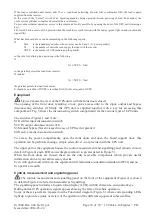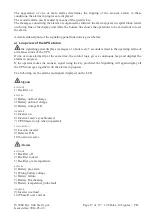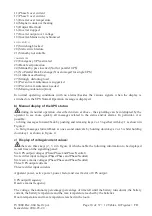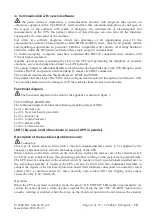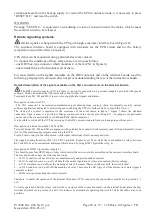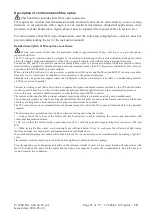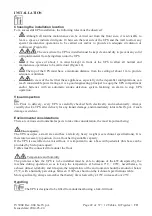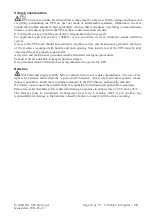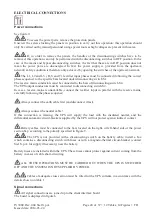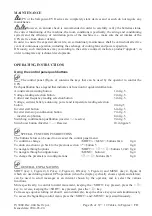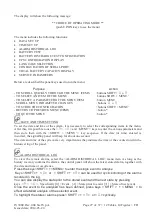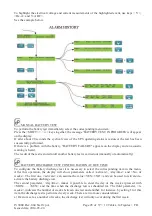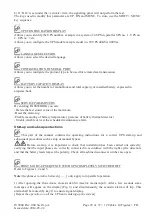
IV306E Rev. 004 Siel S.p.A.
Page 14 of 37 + 12 Tables, 14 F FR
Issued date: 2014-03-24
Interactive mode of operation
The rectifier/battery charger (3) changes the mains voltage into a regulated and filtered direct
voltage, suitable to re-charge the battery and keep it charged. Furthermore, the rectifier also supplies
the necessary voltage for empty inverter operation.
In the meantime, the load is supplied by the mains through the static switch (6).
IGBT-type inverter (4), with Pulse-Width Modulation (PWM), is constantly synchronised at the mains
voltage to minimise load disturbance in case of power outage.
In case of power outage, the static switch feeds the load from the inverter; power necessary for inverter
operation is supplied by batteries (10), since the rectifier stopped when the power went off. This
situation is maintained until batteries are low or until mains power is restored.
A special circuit stops the inverter when the battery voltage reaches very low levels (so low that the
batteries could become damaged).
For this reason the end of discharge voltage is changed in function of the inverter current.
Before the inverter stops, a near low battery signal is produced.
When the mains power is restored, the rectifier restarts operating and recharges the batteries, while the
load is again supplied by the mains.
Thanks to the technologies used, the efficiency of the apparatus remains very high during operation
with mains; in fact the only leaks are determined by the static switch and by the empty operation of the
inverter.
With regard to the description of battery recharging, signals, E.P.O. circuit and 12-phase bridge,, refer
to the previous paragraph “Description of operation in ON-line mode".
The switch from ON-line mode to Interactive mode and vice-versa can be done (by trained personnel)
directly in the field using a special command without replacing the electronic boards.
Description of Parallel operation
In the case of in-parallel operation, the units are interconnected so the outputs of all the machines
are connected together (naturally, each UPS can be disconnected from parallel by means of the output
disconnection switch S2).
This way it is possible to increase the output power and/or the reliability of power to the load. In fact,
with n. machines in parallel, an output power of n. times the rated power of the single machine (Pn)
can be achieved; furthermore, when the load absorbs a power equal to (n-1) Pn, if a machine breaks
down, the system does not stop (increase of reliability of power to load).
In order to coordinate the operation of several units in parallel, the UPS units exchange a whole series
of data by means of a network of optical fibres. This way, maximum immunity is achieved to electrical
disturbances.
The Siel parallel does not require the exchange of any electrical type signal.
Without going into operating details (for more details, the Siel staff are at your disposal) suffice it to
say that the inverters are kept carefully synchronised so as to prevent exchanges of current between the
machines.
Even when the load is supplied through static switches (also connected in a parallel redundant
configuration), power is correctly partitioned among the machines through suitable partition coils.
To sum up, in the event of an intentional or accidental stop of one of the UPS systems, the load is still
supplied by the other units in parallel, provided this is allowed by the total load power. It is even
possible, if the system is properly made (Figure 11), to disconnect one UPS completely and if
necessary replace it without interrupting load supply.

















